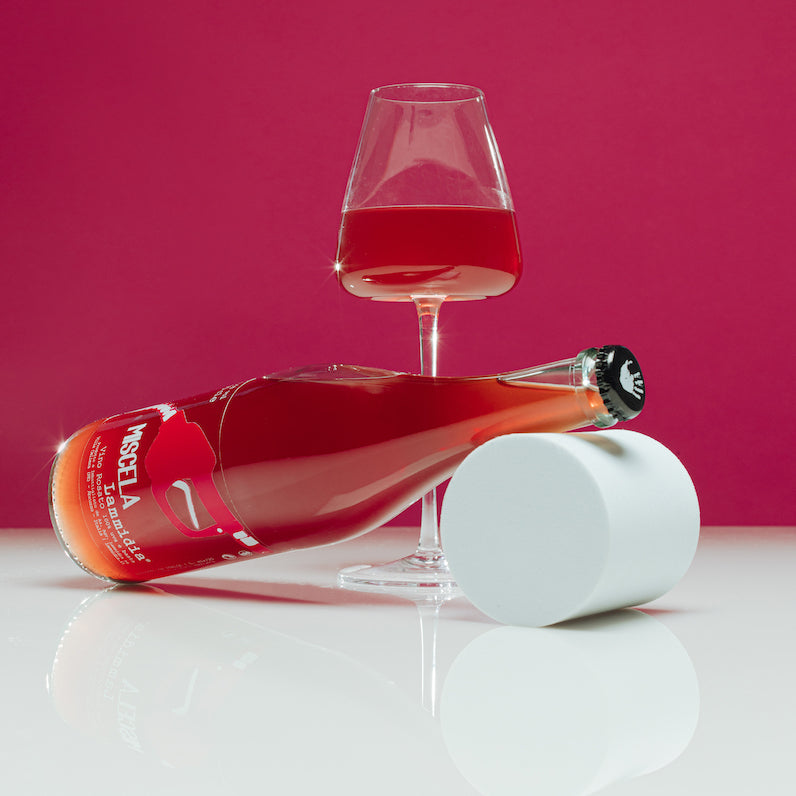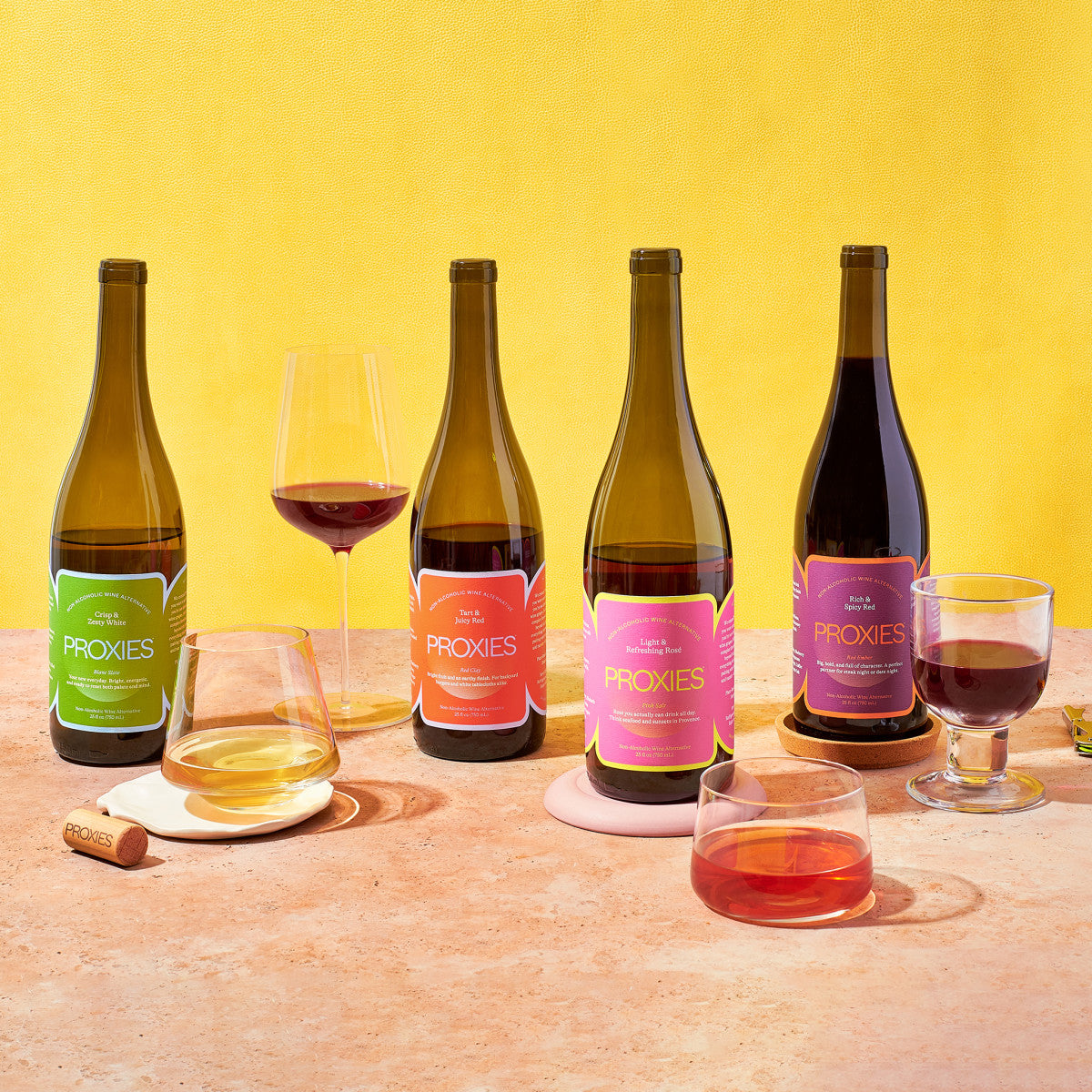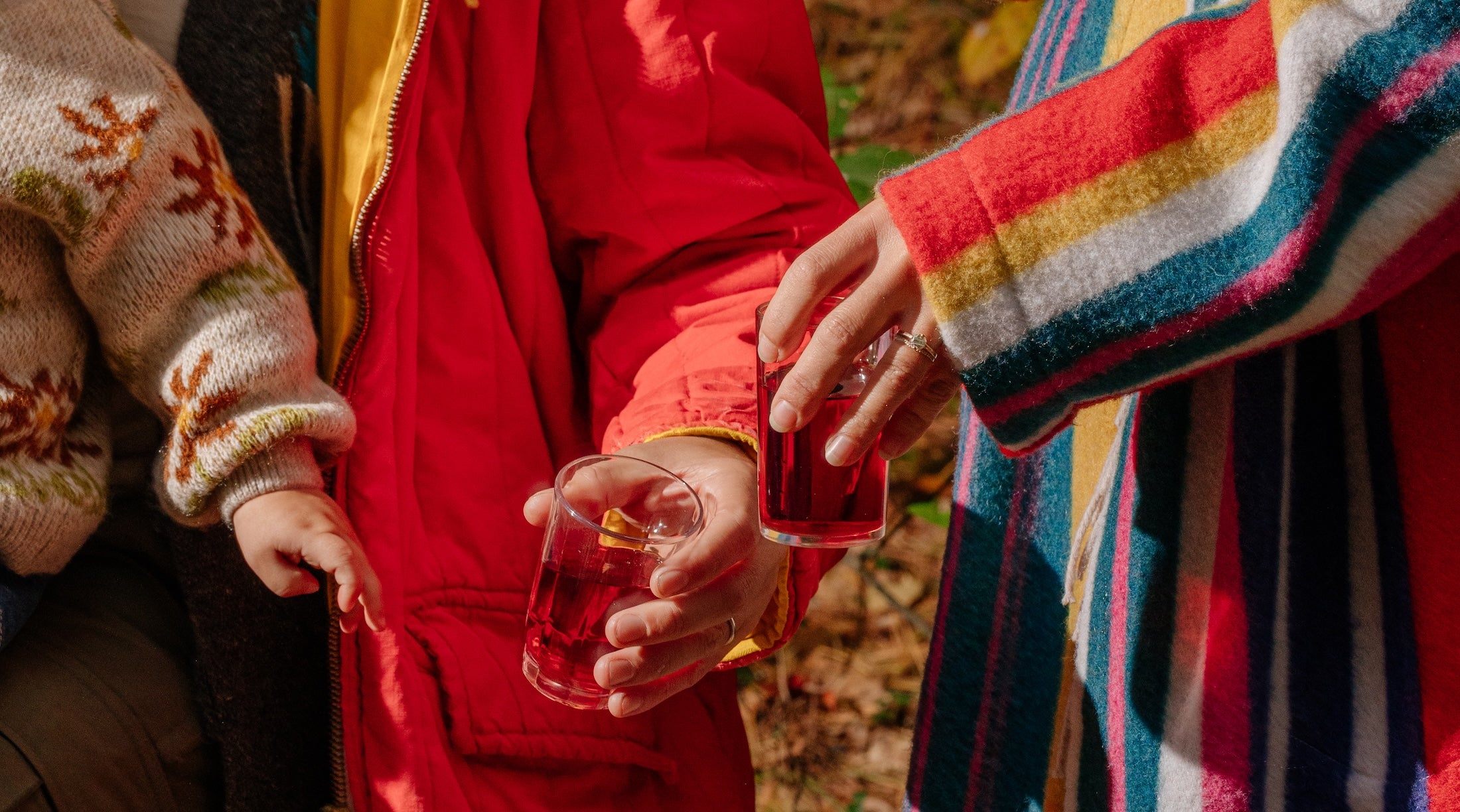As one of the most hyped-up bottles in the wine space, it’s likely that you’ve caught a glimpse of Las Jaras’ “Glou Glou” light red wine while scrolling through your Instagram feed. But what if we told you that glou-glou goes well beyond a single bottle, and is practically a style all its own? Perfect for summer (or, really any) seasonal sipping, there’s a reason you’ll want to keep at least one bottle of glou-glou in the rotation all year round.

What is Glou-Glou?
Simply put, the phrase “glou-glou” is meant to evoke the sound of liquid (in this case, wine) pouring rapidly out of a container, or down your throat. Before you think we’re speaking nonsense, say the phrase out loud to yourself, and we think you’ll hear the sonic similarity for yourself. It’s a playful way to describe wines that are so refreshing and quaffable, they’re spending less time in the bottle and more time being poured into the nearest empty glass.
The phrase is understood to have emerged in France—like so many facets of modern winemaking—where wines from the Loire Valley and Beaujolais regions have shaped a now-global understanding of the style. This is also why we use the term “glou-glou” instead of English-leaning terms like “gulp-gulp” or “glug-glug,” even though the onomatopoeic terms are functionally the same.
While the phrase has appeared in works that date as far back as the 17th century, the modern usage of glou-glou in casual conversation was imported by… well, wine importers who were travelling back-and-forth from France. Natural wine advocate and sommelier Lee Campbell cites conversations with the late Joe Dressner (who co-founded well-respected Louis/Dressner wine importing firm) for introducing her to the term, which went on to inform her 2016 natural wine tasting event “The Big Glou”. The event, which took place in Brooklyn, was considered to be one of the first of its kind in the New York area—now a natural wine hub in its own right.
Glou-glou wines are also interesting in that they can come from almost any winemaking region and technically be red, white, rosé or orange. Whether the wine hails from eastern France, southern Italy or northern California, the important thing is that glou-glou wines will be low in alcohol and imminently drinkable (chuggable, poundable, slammable—whatever term you want to use, we don’t judge).

What does Glou-Glou Wine Taste Like?
On the whole, glou-glou wines are going to be fruit-forward and juicy. Glou-glou wines generally have medium-to-high acidity, but a relatively low alcohol percentage (somewhere between 10 and 12 percent ABV).
As the name implies, glou-glou wines are meant to be poured, not stored. While glou-glou can be enjoyed in a variety of different ways, the important thing is to drink them with a slight chill and young.
In France, glou-glou doesn’t just refer to wines that are perfect for waterfront wine-sipping, but also can represent a class of wines that don’t steal the spotlight when paired with food. A counter to the United States’ historical penchant for highly-oaked, big-body wines, the proliferation of glou-glou serves as reminder that wine can hold a similar position to a cold glass of water on the dinner table (albeit with a bit more alcohol than a serving of H2O).
Taken together, expect glou-glou wines to taste light and fruity and be drinkable with or without food. Just like the equally French phrase “vin de soif” (roughly meaning “wines for thirst”), glou-glou wines taste thirst-quenching and refreshing. Who can argue with that? This profile is likely due including carbonic maceration—which sees whole clusters of grapes put into a vat with CO2, causing the grapes to literally explode from the pressure. This method of maceration or pressing is closely associated with—wait for it—Beaujolais and its signature, light-bodied Nouveau style.
So What Is Carbonic Maceration?
Carbonic maceration (or semi-carbonic maceration), will usually bring the juice in contact with the skins and seeds (the parts of the grape that give wine its tannins or “body”), without imparting the amount of color or tannin that other extraction methods will. Ultimately, this “lighter” approach is a great way to give wine distinctive, juicy characteristics, often imparting flavors like banana, strawberry or even bubble gum.
For the especially curious, the difference between carbonic maceration and semi-carbonic maceration is basically down to how the vats are sealed for the fermentation. In semi-carbonic maceration, the vats are left open and no CO2 is added, but the maceration occurs as the weight of the grapes placed at the top of the vat compress those at the bottom—breaking open the bottom layer of berries, exposing their juice to the yeast on the grape skins and kick-starting fermentation. Basically, the carbon dioxide from the fermentation on the bottom rises to the upper level of grapes and starts their carbonic maceration; the wine effectively ferments from the bottom, up.

Who Makes Glou-Glou Wine?
Aside from notable examples (like Las Jaras’ aforementioned hype juice), chances are you’re not going to see the words “glou-glou” listed on a bottle of wine in your local shop. That said, there’s a few things to keep an eye out for that might help you spot a glou-glou wine before you need to pop the cork.
As we’ve mentioned, wines from the Beaujolais and Loire Valley regions in France will likely use some techniques and winemaking processes that will create a juicy, quaffable wine, but that’s not all those regions produce. Even elsewhere in Europe—Italy has created some cult favorite glou-glou bottles. These include Lammidia’s “Rosh” or the Action Bronson co-signed “Susucaru”, hailing from Mount Etna’s own cult-favorite producer, Frank Cornelissen.
On a broader note, glou-glou style wines tend to lend themselves naturally (pun not intended) to the natural wine movement thanks to a penchant for “natural wine” producers to create wines with a focus on lighter, brighter, more acidic profiles. As Coly Den Haan, owner of female winemaker-focused shop Vinovore, explained to Refinery29, “Most natural winemakers lean toward lighter, fresher style wines with juicy acidity and lower alcohol, which absolutely makes them more glug-worthy.”
As far as in the United States, we recommend bottles like Las Jaras’ “Glou Glou” (of course) a blend of Petit Sirah, Zinfandel, Carignan, and Pinot Noir
from Sonoma County, along with GULP Orange and Cuvee Zero from Ruth Lewandowski. While all three are unique bottles in their own right (with equally charming, eye-grabbing labels on their respective bottles), they all should provide that bright, “share-with-your-friends” quality that makes glou-glou… well, glou-glou.
Why We Love Glou Glou Wine
While sometimes the category can get confusing because people can confuse natural wine to be just this category (and us here at MYSA love experiencing all the types of natural wine out there), glou-glou feels like the OG natural wine of this generations movement. Starting with the wines in Beaujolais, it feels like a great nod to why the natural wine movement started and has evolved so beautifully over the last few decades.
Our founder, Holly, also loves it purely because it typically tastes fresh and delicious. Millennials and Gen-Z are drinking a lot less wine than previous generations and she believes a lot of that may be coming from the styles they're used to seeing.
"Most of the younger generation is turned off by overly oaked Cab and Chard. Glou-glou wines show what else wine can be and I believe have led to a lot of these generations staying in the wine category instead of opting into craft beer or cocktails. Though I'm a fan of all of those categories honestly, and I think that is another hallmark of our generation, that we want to have lots of options."
Plus, what's better during the long summer days than having an easy drinking refreshingly delicious wine while you enjoy the heat of the grill during a backyard barbecue? We always recommend you serve these wines slightly chilled.
If you’re interested in doing a bit more exploration on your own, we have a section on our site dedicated to wines that fall into a glou-glou category. We also have created a “Glou Glou Natural Wine Box”, which comes with eight bottles which we feel exemplify the style today!
Gregory Babcock is an experienced editor, copywriter and marketing professional. with a demonstrated history of writing for and working in the tech startup, fashion, wine and broader lifestyle industries.



